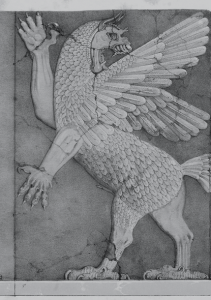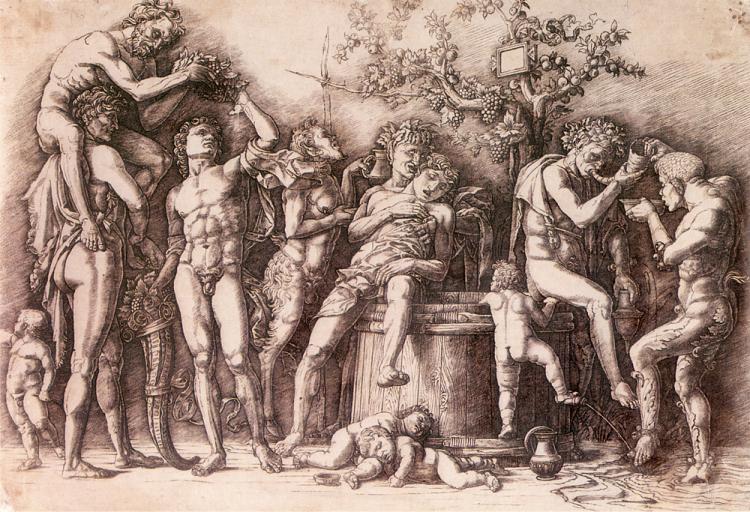This post is part of a series of guest posts on GPS by the undergraduate and graduate students in my Science vs. Pseudoscience course. As part of their work for the course, each student had to demonstrate mastery of the skill of “Educating the Public about Pseudoscience.” To that end, each student has to prepare a 1,000ish word post on a particular pseudoscience topic, as well as run a booth on-campus to help reach people physically about the topic.
______________________________________________
A Brief History of Exorcisms; Or, Why Demons aren’t actually Out to Get You by Amanda Beck
It has been believed for thousands of years that evil exists in our world. Whether it’s Hell, demons, ghosts, ghouls, or multiple other baddies, there has always been this idea that a more sinister world secretly lay hidden, mingling with our own, working it’s magic to tempt us into wrong-doing. As far back as we can tell, people have blamed their bad behavior on influences of evil and the like. This skewed perspective sparked a curiosity as to where this belief originated, and why it is still so prevalent today. Some of the findings may just surprise you.
As it turns out, demonic possession and its comrade-in-harm exorcism have no scientifically based evidence to support claims of their existence, and are therefore considered pseudoscience. So if there is no scientific evidence to support claims of demonic possession, why the heck do people still believe this stuff? Well, it’s not just a small number of people – a staggering 41% of people in the US believe in demonic possession! This number is a main reason I have set forth to help educate the people on this common pseudoscience. In order to understand the “why” of this belief, we must first get a little bit of history.
 Written depictions of demonic possession date back thousands of years, beginning with the Sumerians, who thought that “sickness demons” were the cause of all diseases in mind and body. Due to their limited knowledge of illness and the human body, ailments such as infection or schizophrenia had no explanation. So, like many people of that time did, they turned to religion for answers. Their belief dictated that god brought the things that were good, so it only made sense that something evil (or the opposite of god) brought the things that were bad. The Sumerian cures for such possessions were some of the first known exorcisms given by priests (called sorcerers) who applied bandages and salves. This gave little aid to those who were suffering real ailments, yet the belief of demonic intervention was still the primary explanation. Even as far back as 3500BC, religious priests have been performing exorcisms on members of their congregation and communities using things such as religious chanting, holy reading, and prayers to combat the evil spirits. Many of these rituals included attempts to get the spirit or entity to leave by taking a religious oath, priests commanding the spirit to leave in the name of a higher power, and even splashes of holy water to expel the demon. Different religions however have varying methods and techniques to rid a body of a demon.
Written depictions of demonic possession date back thousands of years, beginning with the Sumerians, who thought that “sickness demons” were the cause of all diseases in mind and body. Due to their limited knowledge of illness and the human body, ailments such as infection or schizophrenia had no explanation. So, like many people of that time did, they turned to religion for answers. Their belief dictated that god brought the things that were good, so it only made sense that something evil (or the opposite of god) brought the things that were bad. The Sumerian cures for such possessions were some of the first known exorcisms given by priests (called sorcerers) who applied bandages and salves. This gave little aid to those who were suffering real ailments, yet the belief of demonic intervention was still the primary explanation. Even as far back as 3500BC, religious priests have been performing exorcisms on members of their congregation and communities using things such as religious chanting, holy reading, and prayers to combat the evil spirits. Many of these rituals included attempts to get the spirit or entity to leave by taking a religious oath, priests commanding the spirit to leave in the name of a higher power, and even splashes of holy water to expel the demon. Different religions however have varying methods and techniques to rid a body of a demon.
The Ancient Egyptians also believed in entities such as demons, though they were not labeled as such. These cruel or hostile entities played an important part in Egyptian culture and are evident in both archeological remains as well as text. The Egyptians even had different categories or types of demons that would possess and cause different ailments the way different spider bites would cause different reactions. Spells, prescriptions, and apotropaic devices further indicate how prevalent these “demons” were in ancient Egypt.
 The ancient Greeks had groups such as the cult of Dionysus who “voluntarily induced” possession by the gods through excess wine and sexual rites which lead to madness. This ritual became so widespread in Greece that the ancient Romans actually banned the practice due to excesses. Priestesses were most commonly the ancient Greek’s method of other worldly contact and were often used as mediums for the Greek gods.
The ancient Greeks had groups such as the cult of Dionysus who “voluntarily induced” possession by the gods through excess wine and sexual rites which lead to madness. This ritual became so widespread in Greece that the ancient Romans actually banned the practice due to excesses. Priestesses were most commonly the ancient Greek’s method of other worldly contact and were often used as mediums for the Greek gods.
It was the Romans who were actually among the first to separate mental illness and other ailments to factors outside of possession. Hippocrates first proposed that madness was due to an imbalance of four bodily humors. This would imply that depression, for example, was a result of excess black bile which could be cured with specific diets, purgatives, and even blood-letting. Taking a note from Hippocrates, the Roman physician Asclepiades as well as philosopher Cicero asserted that things such as depression did not originate with ailments such as excess black bile as Hippocrates’ had believed, but rather from emotions (rage, fear, grief, etc.). Around the time of Jesus, however, Asclepiades’ influence declined and a more influential physician, Celsus, once again stated the idea that madness was a godly punishment and not simply an ailment of the body.
Then, let’s fast-forward a few hundred years to the rise of Christianity. In the typical Christian Bible, the book talks about the existence of demons as well as demonic possession as a means of finding a bodily resting place for lost spirits (such as in Matthew 12:43, 45, and Luke 11:24-26). Jesus himself was even depicted as expelling such demons and it was accepted by many religious practices as a supernatural explanation for various displeasing behaviors. The church was able to use this belief to control the congregation with threats of damnation if certain behaviors were not met or followed. These beliefs were wide-spread, reaching across many countries, and influencing such things as religious wars and political conflicts. During the Salem Witch Trials, for example, individuals who presented with different kinds of mental problems were labeled as witches or considered to be demonically possessed, and were sometimes killed for their “treason” against God.
Unfortunately, literature supports that these people were not witches or possessed, but rather they were mentally ill or ostracized for unique personal characteristics (such as disabilities or socially unacceptable practices such as premarital sex). It has also been alluded to that in the past people have actually faked the symptoms of demonic possession. The reasons for this can vary greatly, but some include attention seeking, as a form of malingering, and sometimes even as a manipulation of others.
Mental illness was commonly misunderstood for many centuries and people would often look to religion for an explanation. This led some families to explain away things like mental illnesses as simple demonic possession that could quickly be reversed with a priest-led exorcism. Unfortunately, the symptoms of the underlying mental illness were often still present after the exorcism, so it was common for someone to have multiple exorcisms.

The belief of demonic possession and exorcism is not simply ignorant of modern science, it is also dangerous. For example, a man hogtied and shot his brother to death in 2010, claiming that demons made him do it. Exorcisms have also been proven dangerous as with the case of Anneliese Michel, who was exorcised 67 times until she finally died at the age of 23. These stories are less common of course, but the fact of the matter is this belief prevents individuals who are really suffering from mental or physical illness from receiving the treatment they need. Naturally, Hollywood likes to capitalize on such stories by creating memorable horror films such as The Exorcist or The Exorcism of Emily Rose (which some believe was based on the Anneliese Michel story). These stories, while meant for entertainment purposes, often fuel the pseudoscientific belief of demonic possession and exorcism.
The supposed symptoms of demonic possession are more often than not symptoms of an underlying mental illness such as schizophrenia or other forms of mania, as well as substance abuse or mood altering illnesses. It is the tendency of humans to try to explain that which cannot be explained, however, and sometimes the easiest answer (a magical demon entering a person and causing them to act a certain way) is not always the right answer (a treatable mental illness that is simply misunderstood).
While science is discovering more about the human brain as well as the mental illnesses that inflict it, there are still those who are critical of science as a whole. The issue with demonic possession is not the inability of science to disprove it, but rather the inability on the part of the individuals with such claims to prove it. Science cannot disprove what does not exist, but many supporters of the idea of demonic possession use that inability to disprove as proof of existence. This skewed logic further propels misconceptions like demonic possession and slows scientific research. History as well as science has shown no evidence to support the existence of demonic possession, or the effectiveness of exorcism as a treatment.
